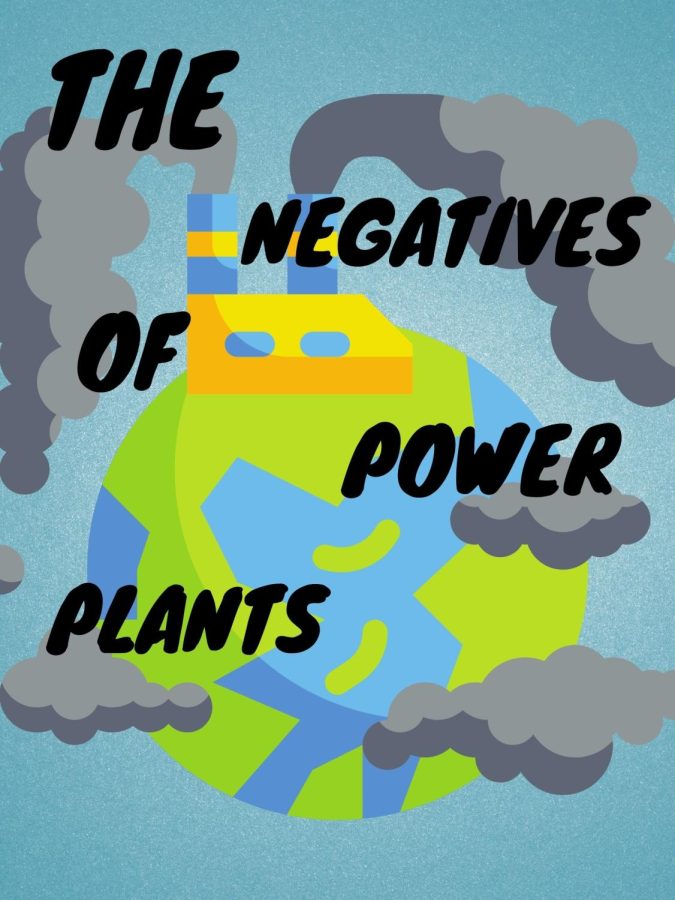Power plants are seriously damaging our environment
The adverse effects that power plants have on our planet and life.
One of the most harmful pollutants on earth is power plants; industrial facilities that generate electricity through primary energy. Power plants place negative consequences on the atmosphere, humans, animals and plants.
To start with, power plants are one of the largest sources of greenhouse gas pollution in the United States. Some of the damaging gases include carbon dioxide, methane and organic air toxics. According to Environment America researchers, the nation’s power plants emitted 2.56 billion tons of global warming pollution in the year of 2007. This is equal to the pollution from approximately 450 million modern-day cars.
Likewise, I found myself questioning why it was 70 degrees Fahrenheit on some days in mid-December. Global warming is significantly worsening as the days progress, and the amounts of pollutants from power plants are not helping.
In addition, a myriad amount of animal ecosystems, such as aquatic and arctic life, are gradually falling apart due to power plant emissions. These plants use up to a billion gallons of water daily for cooling; as these waters are dispensed back into the rivers, like the Hudson River for example, heat pollution occurs. The Hudson River is a prominent estuarine that houses numerous marine species, vulnerable to power plant cooling pollution. This chokes and kills many fishes and other species. In fact, reports record up to 60 percent mortality for newborn fish. Also, stated in a NASA study, the added global warming effects are melting ice caps and killing arctic species including polar bears, arctic foxes, penguins and many more.
Furthermore, coal power plants negatively affect crop production in agriculture. The ashes produced by power plants cover fruits and vegetables causing them to dry up and become poisoned. Higher levels of climate change disrupt consistent weather patterns and harms the development of vegetation. Acid rain is also formed, deteriorating the health of the soil and its ability to retain water. This ultimately leads to lands being destroyed and trees drying up.
Moreover, human health is at risk because of power plant pollution. Plant workers face elevated rates of asbestosis and mesothelioma as a result of exposure from asbestos products on the job; this involves maintaining pipes and electrical appliances. Poor ventilation in most plant workplaces causes airborne asbestos to accumulate around workers. The dangers associated with breathing in asbestos include lung stiffness to a point where it becomes very difficult to breathe properly. Duke Medical School research explains that people who reside near power plants have high chances of becoming ill at an early age. Toxic air pollution leads to lung cancer, respiratory disease, cardiovascular disease and other health problems.
For a healthier planet in the long run, we need to come together and take action immediately. While power plants are larger sources of air pollution and global warming, it’s not the only source. Others like oil refineries, transportation from vehicles and trains and planes emit toxic gases as well. We need to ensure that we do our part and turn off the water and lights when not in use, wash loads of laundry with cold water and invest in energy efficient appliances when possible. These tasks might seem like small things to an individual, but when everyone does them, it can make a huge difference.






Emily Dudash • Feb 10, 2022 at 12:47 pm
great job Yusha!! this is such an important topic, and I’m so glad you wrote about it!! <3
Millie Monahan • Feb 8, 2022 at 1:13 pm
this is so good Yusha!!! Really awesome 😀
Kendall Wilson • Feb 8, 2022 at 1:05 pm
amazing article!